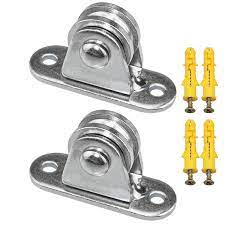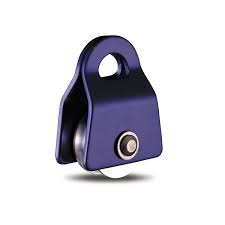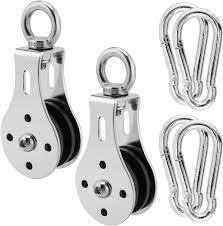Product Description
25 YEARS manufacturer Multiple engine/Size Crankshaft Tensioner, Crankshaft Pulley Change Small Size 6D22 Replacement of Many Types of machine excavator.
Our main products:
steel cover lock, filter, oil grid, pump, cylinder head, crankshaft, camshaft, connecting rod, connecting rod bearing, valve, plunger, nozzle, exhaust valve, engine assembly, intake pump , fan blade, engine preheater, radiator, intake valve, main bearing, crankshaft bearing, nozzle, nozzle pipe, oil pump, piston, piston pin, piston ring, plunger, valve seat, thrust bearing, valve guide, valve Seats, valve seals, gasket sets, water pumps, turbochargers, generators, starters, sensors…
Please click here>>>>Contact us for more factory price,shipping and discounts
| ENGINE CUSHION | ||||||||||||||
| NO. | LB NO. | Model | OEM NO. | Name | NO. | LB NO. | Model | OEM NO. | Name | NO. | LB NO. | Model | OEM NO. | Name |
| 1 | KLB-Q3 | BELT TENSIONER | 15 | KLB-Q0017 | SK350-8 4pieces groove | BELT TENSIONER | 28 | KLB-Q0032 | 4BD1 4BG1 A:singlePK B:3PK |
3389198 | CRANKSHAFT PULLEY | |||
| 3 | KLB-Q0003 | 6CT | 3967190 | BELT TENSIONER | 16 | KLB-Q0018 | SK460 3pieces groove | BELT TENSIONER | 29 | KLB-Q0033 | EX200-1/3 6BD1 | CRANKSHAFT PULLEY | ||
| 4 | KLB-Q0004 | EC210 | 462280 | BELT TENSIONER | 17 | KLB-Q0019 | VOLVO360 | BELT TENSIONER | 30 | KLB-Q0034 | 6D31(NEW) | 173*140*34 | CRANKSHAFT PULLEY | |
| 5 | KLB-Q0005 | E325C | 144-1102 | BELT TENSIONER | 18 | KLB-Q571 | S6K | BELT TENSIONER | 31 | KLB-Q0035 | 6D31(OLD) | 160*120*34 | CRANKSHAFT PULLEY | |
| 6 | KLB-Q0006 | PC200-8 | BELT TENSIONER | 19 | KLB-Q0571 | PC60 4D95 | 150*66*43 | CRANKSHAFT PULLEY | 32 | KLB-Q0036 | E200B/320 | 160*113*45 | CRANKSHAFT PULLEY | |
| 7 | KLB-Q0007 | VOLVO210 stainless steel | BELT TENSIONER | 20 | KLB-Q0571 | PC120-6 | CRANKSHAFT PULLEY | 33 | KLB-Q0037 | E320B | 160*110*45 | CRANKSHAFT PULLEY | ||
| 8 | KLB-Q0008 | VOLVO360 | BELT TENSIONER | 21 | KLB-Q571 | PC200-3 6D105 | 144*113*39 6138-31-1480 | CRANKSHAFT PULLEY | 34 | KLB-Q0038 | E320C | 170*143*45 | CRANKSHAFT PULLEY | |
| 9 | KLB-Q0009 | CA016/C7 | BELT TENSIONER | 22 | KLB-Q0571 | PC200-5 6D95 | 150*110*41 6207-31-1410 | CRANKSHAFT PULLEY | 35 | KLB-Q0039 | DH220-5 DB58 | CRANKSHAFT PULLEY | ||
| 10 | KLB-Q571 | VOLVO480 with Belt groove | BELT TENSIONER | 23 | KLB-Q0571 | PC200-6 6D95 | 155*154*42 6209-31-1410 | CRANKSHAFT PULLEY | 36 | KLB-Q0014 | DH | 2107-6004B | BELT TENSIONER | |
| 11 | KLB-Q0011 | VOLVO480 | BELT TENSIONER | 24 | KLB-Q0026 | PC200-6 6D102 | 6735-61-3280 220*54*19 | CRANKSHAFT PULLEY | 37 | KLB-Q0015 | EX | BELT TENSIONER | ||
| 12 | KLB-Q0012 | VOLVO480 | BELT TENSIONER | 25 | KLB-Q0571 | PC300-3 PC400 6D125 | 182*118*43 | CRANKSHAFT PULLEY | 38 | KLB-Q571 | EX200-5 6BG1 3pieces groove | 230*120*40 | CRANKSHAFT PULLEY | |
| 13 | KLB-Q0013 | E320C | BELT TENSIONER | 26 | KLB-Q571 | A:PC300-6 6D108 doublePK | 144*127*40 | CRANKSHAFT PULLEY | 39 | KLB-Q0030 | 4D31 | 168*100*35 | CRANKSHAFT PULLEY | |
1Q:What is your brand?
1A:Our own brand: Mita Group and its range of excavator parts.
2Q:Do you have your own factory? Can we have a visit?
2A:Absolutely, you are alwayswelcome to visit our factory.
3Q:How do you control the quality of the products?
3A:Our factory was obtained the ISO9001CERTIFICATE.Every process of the production is strictly controlled. And all products will be inspected by QC before shipment.
4Q:How long is the delivery time?
4A:2 to 7 days for ex-stock orders. 15 to 30 days for production.
5Q:Can we print our company logo onproduct and package?
5A:Yes, but the quantity of the order is required. And we need you to offer the Trademark Authorization to us.
6Q:Can you provide OEM BRAND package?
6A:Sorry, we can only offer our company ACT BRAND package or neutral packing,blank package ifyou need, and the Buyers’ Brand as authorized.7Q:How long is the warranty period?7A:3 months
| Certification: | ISO9001 |
|---|---|
| Standard Component: | Standard Component |
| Technics: | Casting |
| Material: | Aluminum |
| Type: | Crankshaft Tensioner |
| Transport Package: | Standard Packaging |
| Samples: |
US$ 15/Piece
1 Piece(Min.Order) | |
|---|
| Customization: |
Available
| Customized Request |
|---|

What safety considerations should be kept in mind when using small pulleys?
When using small pulleys, it is essential to prioritize safety to prevent accidents and injuries. Here are some important safety considerations to keep in mind:
1. Proper Guarding:
– Ensure that small pulleys are adequately guarded to prevent accidental contact with moving parts. Install appropriate covers or enclosures to prevent fingers, clothing, or other objects from getting caught in the pulley system. This is particularly important when using hobbyist and craft tools where pulleys are exposed and accessible during operation.
2. Personal Protective Equipment (PPE):
– Wear appropriate personal protective equipment, such as safety glasses or goggles, gloves, and protective clothing, when working with tools that incorporate small pulleys. PPE can protect against potential hazards, including flying debris, loose belts, or accidental contact with rotating components.
3. Training and Knowledge:
– Ensure that individuals operating tools with small pulleys have received proper training and possess the necessary knowledge and skills to use the equipment safely. Familiarize yourself with the manufacturer’s instructions, recommended operating procedures, and any specific safety precautions related to the tool and its pulley system.
4. Inspection and Maintenance:
– Regularly inspect small pulleys, belts, and associated components for signs of wear, damage, or misalignment. Replace any worn or damaged parts promptly to maintain safe operation. Follow the manufacturer’s recommended maintenance schedule and guidelines to ensure the pulley system remains in good working condition.
5. Power Source Safety:
– When working with tools powered by electric motors or other energy sources, observe proper electrical safety precautions. Ensure that the power source is disconnected or turned off before performing any maintenance, adjustments, or repairs on the pulley system. Follow electrical safety guidelines and local regulations.
6. Secure Mounting:
– Ensure that small pulleys are securely mounted and properly aligned to minimize the risk of pulley dislodgment or misalignment during operation. Loose or improperly installed pulleys can lead to accidents or damage to the tool and its associated components.
7. Load Capacity:
– Consider the load capacity of the small pulleys and associated components when using them in applications. Exceeding the recommended load capacity can lead to excessive stress on the pulley system, increasing the risk of failure and potential hazards.
8. Operator Awareness:
– Stay focused and alert while operating tools with small pulleys. Avoid distractions and maintain a clear workspace to minimize the risk of accidents. Be aware of the location of your hands, fingers, and other body parts in relation to the pulleys and moving components.
9. Emergency Stop and Shutdown:
– Ensure that tools incorporating small pulleys are equipped with emergency stop buttons or switches. Familiarize yourself with the location and operation of the emergency stop feature. In case of an emergency or if an unsafe condition arises, promptly activate the emergency stop to halt the tool’s operation.
10. Risk Assessment:
– Conduct a risk assessment of the specific application and identify potential hazards associated with the use of small pulleys. Implement appropriate control measures to mitigate the identified risks and ensure safe operation.
Remember, safety should always be a top priority when working with tools incorporating small pulleys. By following these safety considerations and exercising caution, you can minimize the risk of accidents and create a safer working environment.

How does the size and diameter of a small pulley affect its performance?
The size and diameter of a small pulley have a significant impact on its performance and functionality within a mechanical system. The dimensions of a small pulley influence various aspects, including power transmission, speed ratios, mechanical advantage, belt tension, and overall system efficiency. Here is a detailed explanation of how the size and diameter of a small pulley affect its performance:
1. Power Transmission:
– The size and diameter of a small pulley directly affect its power transmission capabilities. Larger pulleys have a greater circumference, which allows them to engage a larger portion of the belt or cable. This increased contact area improves the grip between the pulley and the belt, enabling higher power transmission capacity. Smaller pulleys, on the other hand, have a smaller circumference and are suitable for applications requiring lower power transmission.
2. Speed Ratios:
– The size and diameter of a small pulley play a crucial role in determining the speed ratios between the driving and driven components. By utilizing pulleys of different sizes, the rotational speed can be increased or decreased. Larger pulleys on the driving side and smaller pulleys on the driven side result in a speed reduction, while the opposite configuration leads to a speed increase. The selection of the pulley sizes allows for the adjustment of speed ratios to meet specific operational requirements.
3. Mechanical Advantage:
– The size and diameter of a small pulley influence the mechanical advantage it provides. Mechanical advantage refers to the amplification of force achieved by using a smaller driving pulley and a larger driven pulley. As the belt or cable wraps around a larger driven pulley, the force applied to the system is multiplied, making it easier to move or lift heavy loads. The choice of pulley sizes determines the mechanical advantage achieved, allowing for efficient load handling.
4. Belt Tension:
– The size and diameter of a small pulley affect the tension of the belt or cable. Larger pulleys require a greater belt tension to maintain optimal power transmission and prevent slippage. Smaller pulleys, on the other hand, require less tension due to their reduced circumference. Proper belt tension is crucial for ensuring reliable power transmission and minimizing energy losses. The selection of pulley sizes should consider the desired belt tension for the specific application.
5. System Efficiency:
– The size and diameter of a small pulley can impact the overall efficiency of the mechanical system. Smaller pulleys generally require less energy to rotate due to their reduced mass and inertia. This results in lower energy losses and improved system efficiency. Additionally, the correct selection of pulley sizes ensures optimal power transmission, minimizing frictional losses and maximizing the transfer of mechanical energy.
6. Load Capacity:
– The size and diameter of a small pulley influence its load-carrying capacity. Larger pulleys with larger diameters can withstand higher loads due to their increased contact area and grip on the belt or cable. Smaller pulleys, while more compact, have a reduced load capacity. The selection of pulley sizes should consider the anticipated load requirements to ensure safe and reliable operation.
7. Belt or Cable Lifespan:
– The size and diameter of a small pulley can impact the lifespan of the belt or cable. Excessive bending or flexing around small pulleys can subject the belt or cable to increased stress and wear. Larger pulleys, with their larger diameters, result in gentler bending angles and reduced stress on the belt or cable. This can prolong the lifespan of the belt or cable and reduce the frequency of maintenance or replacement.
It is crucial to carefully consider the size and diameter of a small pulley in relation to the specific application requirements. Factors such as power transmission, speed ratios, mechanical advantage, belt tension, system efficiency, load capacity, and belt or cable lifespan should be taken into account to ensure optimal performance and reliability of the mechanical system.

What types of belts or cables are often employed with small pulleys?
When it comes to small pulleys, various types of belts or cables are commonly employed depending on the specific application requirements. The choice of belt or cable is determined by factors such as the desired power transmission, speed ratios, environmental conditions, and load capacity. Here are some types of belts or cables that are often used with small pulleys:
1. V-Belts:
– V-belts are one of the most common types of belts used with small pulleys. They have a trapezoidal cross-section and are designed to fit into V-shaped grooves on the pulleys. V-belts are known for their high flexibility, reliability, and ease of installation. They are suitable for applications that require moderate power transmission and speed ratios.
2. Timing Belts:
– Timing belts, also known as synchronous belts, are toothed belts that engage with toothed pulleys. They provide precise and synchronous power transmission, making them ideal for applications that require accurate positioning or timing. Timing belts are often employed in small pulley systems where precise motion control is crucial, such as robotics, automation, or precision machinery.
3. Flat Belts:
– Flat belts are simple, flat, and flexible belts that make direct contact with the small pulley surface. They are commonly used in applications that require high-speed power transmission or where the pulley diameters are relatively small. Flat belts are suitable for systems with limited space and can be made from materials such as rubber, nylon, or polyurethane.
4. Round Belts:
– Round belts, also known as round o-ring belts, are circular cross-section belts that are often employed with small pulleys. They provide a positive grip by fitting into grooves or pulley recesses. Round belts are flexible, easy to install, and can transmit power in compact systems. They are commonly used in applications such as conveyors, packaging machinery, and small power tools.
5. Cable or Wire Rope:
– In certain applications, small pulleys are used with cables or wire ropes for power transmission or load handling. Cables or wire ropes consist of multiple strands of wire twisted together to form a strong and flexible structure. They are commonly employed in lifting and hoisting systems, cranes, winches, and other applications where heavy loads need to be moved.
6. Poly-V Belts:
– Poly-V belts, also known as multi-rib belts or micro-V belts, have a flat or slightly ribbed surface and engage with corresponding multi-groove pulleys. They offer higher power transmission capabilities compared to standard V-belts due to their increased contact area. Poly-V belts are commonly used in small pulley systems where higher power requirements or multiple belt setups are necessary.
7. Specialty Belts:
– Depending on the specific application, there are various specialty belts available that can be used with small pulleys. These include ribbed belts, serpentine belts, flat-flex belts, and others. Specialty belts are designed for specific purposes such as high-speed applications, unique configurations, or specific environmental conditions.
It’s important to note that the selection of the appropriate belt or cable for small pulleys depends on factors such as load requirements, speed ratios, environmental conditions, and the specific design of the pulley system. Manufacturers and engineers consider these factors to ensure reliable and efficient power transmission in small pulley applications.


editor by CX
2023-12-14